Kochia (Bassia scoparia) is a nuisance weed that aggressively spreads across your lawn, quickly crowding out desired plants. A member of the Amaranth family, it thrives in poor, rocky soil in the arid grasslands, prairies, and crop fields of the northern and western United States and Canada.
In addition to being a nuisance on lawns, it can occasionally be used for ornamental purposes and is considered a grazing grass for livestock due to its high crude protein content.
Characteristics & Life Cycle Of Kochia

Germinating in the early spring, kochia seedlings have soft and fuzzy leaves with a silvery green color to them. The branches and leaves grow into a conical shape that forms more as the plant matures. As kochia matures, the leaves start to vary in size and shape, though they are often hairy. The stems are green or red-tinged and can grow up to 4 feet tall.
Usually by autumn, the plant fully matures to where its leaves turn a bright red, giving the kochia plant a striking appearance. The seed head emerges, producing a high amount of tiny seeds that spread at a rapid rate. Shortly after the red leaves appear, the plant dries and breaks off from its root, turning into a tumbleweed.
Kochia tumbleweeds can spread seeds over vast areas, which then once again germinate in the spring and start the life cycle all over again.
Controlling Kochia
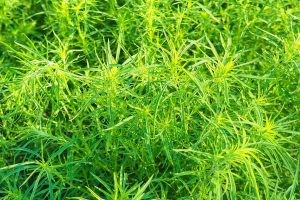
Pre-emergents provide excellent control of kochia and prevent seedlings from taking root. Fortunately, there are a variety of herbicides that offer excellent control of kochia. The plant can be eliminated with the proper blend of post-emergents if applied when the seedlings are less than 4 inches tall.
It’s essential to make sure you use the correct herbicides to get rid of kochia, as it is known to be resistant to some common herbicides. It’s recommended to consult a professional on the correct herbicides to use that will get rid of the kochia and not harm other grass and plants.
Should kochia have grown too large for any post-emergent treatment to help, mowing it often will keep the seed heads from forming and prevent the invasive weed from spreading across your lawn.
Facts About Kochia
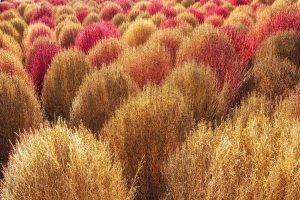
Kochia is used as an ornamental plant in some parts of the world due to its brilliant red leaves and conical shape.
Though toxic when consumed in high quantities, it is a favored grazing grass of livestock. A controlled amount of kochia is perfectly safe for livestock and can provide them with many necessary nutrients.
Kochia plant has medicinal properties, and is still used today. It’s used in traditional medicine for its diuretic, laxative, and anti-inflammatory properties. It’s also been used to treat conditions such as asthma, cough, and urinary tract infections.
Subscribe to Simple Lawns's Blog



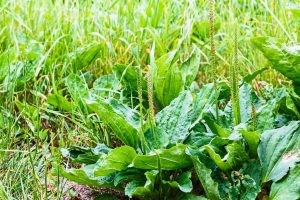

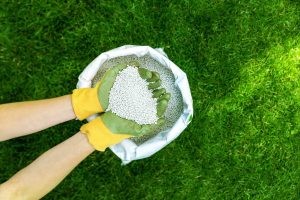
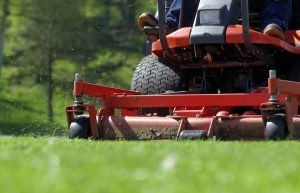


Comments